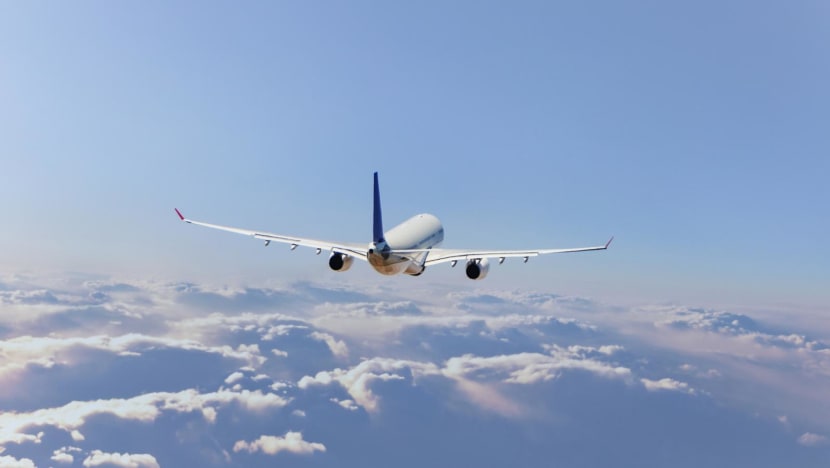CNA Explains: What happens if there's a bomb threat on your flight?
CNA finds out what is done to keep flights safe during a bomb threat, even while thousands of feet up in the air.

File photo of a plane. (Photo: iStock)

This audio is generated by an AI tool.
SINGAPORE: Earlier this month, a bomb threat on Scoot flight TR16 forced the Perth-bound plane to turn back to Singapore.
An Australian passenger was arrested and charged with making false threats of terrorist acts. He allegedly repeatedly told cabin crew that he had a bomb.
Last year, Singapore Airlines flight SQ33 from San Francisco also had a similar scare, when a bomb threat was made more than 12 hours after take-off.
The plane eventually landed safely at Changi Airport and the passenger was given a stern warning and jail for slapping a cabin crew member.
The Republic of Singapore Air Force's (RSAF) Air Defence Task Force deals with more than 350 suspicious air threats each year on average, according to a 2022 article from the Singapore Armed Forces PIONEER magazine.
What can passengers expect after a bomb threat is made on a plane, and how do security efforts take place thousands of feet above ground? CNA finds out.
What happens after a bomb threat is made?
Airlines follow international procedures to vet each threat, said Professor Jeffrey Charles Price, who teaches aviation and aerospace science at the Metropolitan State University of Denver.
The specific processes are confidential. But not every bomb threat is acted on. It is important to determine if the threat is real, or the aviation system could be shut down by someone calling in bomb hoaxes all day, he pointed out.
Authorities will have to look at all the information available, including whether the threat was made by somebody on the plane or came in a phone call or email.
Once an airline determines that a threat requires further action, it will notify its national aviation authority and the air traffic control.
The RSAF scrambled two fighter jets mere minutes after being alerted to the bomb threat on SQ33, according to PIONEER.
Explosive ordnance disposal experts from the 36th Battalion of the Singapore Combat Engineers also stood by on the ground to determine if that bomb threat was real.
RSAF can also use artificial intelligence and data analytics to formulate its response, and put ground-based air defence systems and sensors on high alert, according to an article in PIONEER about a 2022 air threat exercise.
Why does the plane start flying in loops over the same area?
During the bomb scare on TR16, an online flight tracker showed the plane flying in loops over the South China Sea east of Malaysia for about 50 minutes, before returning to Singapore.

When the bomb threat is ongoing, no one can be sure about the extent of the threat or even if there is a valid threat, said Prof Price.
After authorities are alerted, more actions continue to take place to evaluate the threat, and law enforcement agencies also get involved.
The aircraft may be put into a holding pattern during that time so that these parties can decide the next best course of action, he said.
Why is the plane escorted by fighter jets?
Since the 9/11 attacks, any aircraft that is under distress will typically be escorted by military aircraft, said Prof Price.
"Military personnel act as observers, and if the aircraft does not follow directions, they may be able to determine that it is no longer under the control of the pilot in command," he said.
In that case, "they may have to take more drastic measures, which may result in shooting down the plane".
Does the affected flight have to turn back or go forward? Can it just land at the nearest airport?
A plane may turn back if it is not far from the departure airport and that is the best place for it to land, said Prof Price.
But if it is more than halfway to its destination, it may continue flying there or divert to the nearest airport with the ability to handle the situation.
The decision depends on the amount of information that authorities have to work with, he added.
What happens while the plane is waiting on the tarmac?
Passengers on TR16 had to wait three hours to disembark after the plane landed at Changi Airport. Prof Price said this length of time was "about right".
Authorities need time to evaluate the passengers by checking passenger name records against any known terrorist or threat-related databases.
"It cannot be assumed that there is just one bomb threat, and one person making the threat and just one bomb (if it's real)," he said, adding that authorities will want to know as much as they can about the situation.
"During a threat like this, the ground is typically the safest place for the plane to be."
In the SQ33 incident, teams from the SAF's Chemical, Biological, Radiological and Explosive Defence Group and the Airport Police Division also conducted security checks after the plane landed.
















